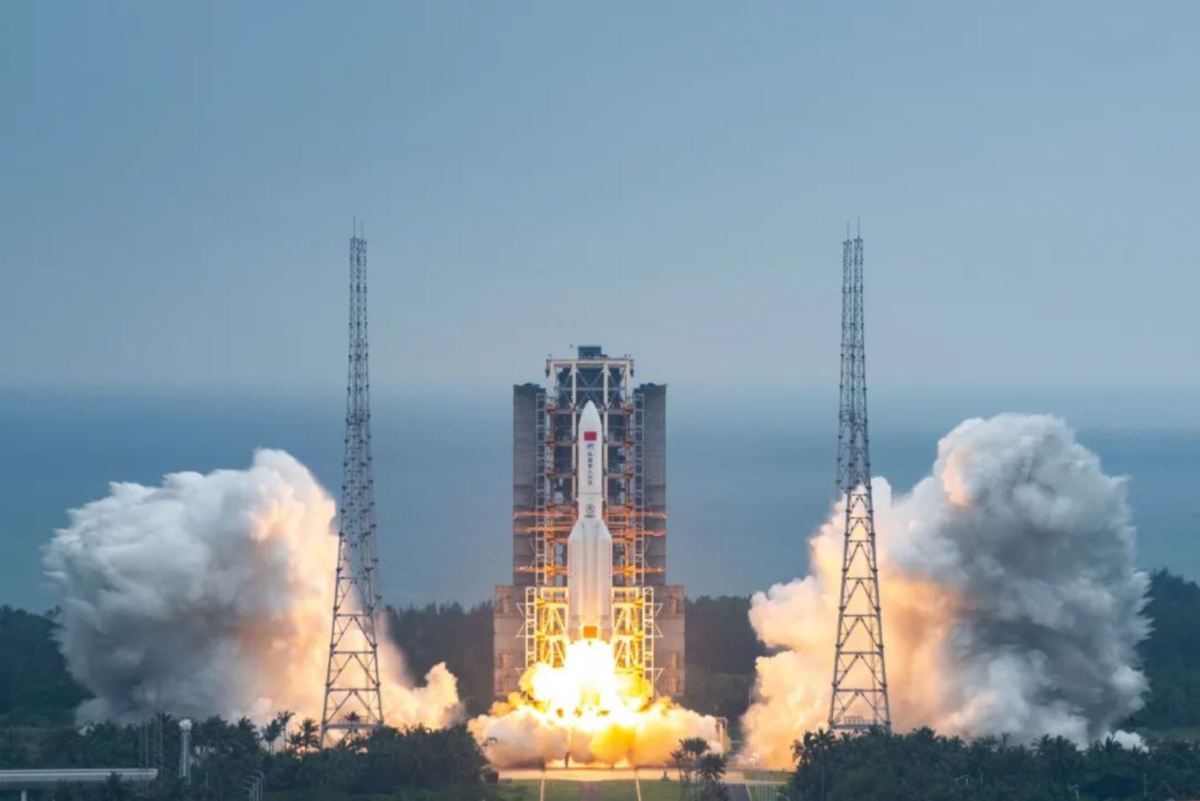29.03.2023

HELSINKI — China is preparing to launch its first satellites for a national low Earth orbit broadband megaconstellation to challenge SpaceX’s Starlink.
A Long March 5B rocket will be equipped with a Yuanzheng-2 second stage for the first time and launched from the coastal Wenchang spaceport in the second half of the year.
The China Aerospace Science and Technology Corporation (CASC), the country’s main space contractor, stated in early March that the new Long March 5B and upper stage configuration would be used to launch satellites for a LEO satellite network.
China is developing its plans to deploy a 13,000-satellite low Earth orbit (LEO) broadband megaconstellation, sometimes referred to as “Guowang,” or national network, to rival Starlink and other Western ventures.
The project will have ramifications for international competition to secure customers for satellite communications, international infrastructure, space debris and for the use of, and coordination in, LEO. It may also have implications for commercial space development in China.
The China Academy of Space Technology (CAST), a major subsidiary of CASC, and the Innovation Academy for Microsatellites (IAMCAS) under the Chinese Academy of Sciences, are understood to be two entities contracted to manufacture satellites for Guowang.
IAMCAS is expected to deliver its first 30 satellites for the project by the end of the year. Other and potentially commercial setups could also be involved in the project.
China has greatly increased its small satellite manufacturing capacity in recent years, with a number of entities each now capable of producing hundreds of satellites per year. Other actors include GalaxySpace and the state-owned China Aerospace Science and Industry Corporation (CASIC). The former launched six LEO communications test satellites last year.
CASC’s main rocket-making arm is meanwhile preparing the Long March 5B rocket for a “high-density launch stage to meet the country’s needs for large-scale and rapid access to space.”
This includes ramping up production of required kerosene-liquid oxygen engines for the launch vehicle’s side boosters.
The Long March 5B rocket was earlier used to send the country’s three modules directly into orbit to construct the Tiangong space station. The upper stage would instead allow for multiple satellites to be injected into various orbits.
The earlier launches saw the 30-meter-long, roughly 23-ton dry mass first stages make high-profile, uncontrolled reentries after reaching orbital velocity. It is possible but unknown if the use of YZ-2 upper stage will allow for the first stage to remain suborbital land within a targeted drop zone.
The State Administration of Science, Technology and Industry for National Defense (SASTIND) published a notice on the management of civil space launch projects in early March.
It states that the last stage of a launch vehicle should be deorbited according to regulations after taking passivation and other measures. Satellites and spacecraft should be actively deorbited when their design life expires according to their license, the points of the notice state.
A number of Chinese commercial launch companies have meanwhile stated their aim to secure contracts to launch satellites for the Guowang project. This has apparently been reflected in newer companies looking to build medium and large launch vehicles earlier in their development.
The earliest commercial launch companies emerging in China after a 2014 national policy shift first looked to develop light-lift launchers targeting contracts from other private and commercial companies looking to reach space.
China now appears to be looking to Guowang and the newly-completed Tiangong space station to provide opportunities for commercial space firms.
Globally, megaconstellations appear set to be an issue of strong competition and contention in the near future.
U.S. space internet companies have expressed concerns over the potential competitive threat from a Chinese LEO constellation with strong government backing. A report published in December by the Center for Strategic and International Studies stated that the development means the United States “could lose its competitive edge.”
Its deployment could mean that western operators find it more difficult to compete internationally, particularly in countries with political ties to China.
China’s military has meanwhile claimed that SpaceX has intended for Starlink to be used for military purposes in the wake of Ukraine’s defense against the invasion of Russia. CASC’s chairman Wu Yansheng said late last year that he believes the U.S. to be restarting great power competition. He claims the U.S. is seeking to seize strategic resources including specific orbits, locations and radio frequencies.
Quelle: SN

